MEDICINE BLENDED ASSIGNMENT
AMISHA JAISWAL
roll no. 03
May 24,2021
I have been given the following cases to solve in an attempt to understand the topic of 'patient clinical data analysis 'to develop my competency in reading and comprehending clinical data including history ,clinical findings, investigation and diagnosis and come up with the treatment plan.
This is the link of questions asked regarding the cases:
http://medicinedepartment.blogspot.com/2021/05/online-blended-bimonthly-assignment.html?m=1
Below are my answers to the medicine assignment based on my comprehension of the cases.
PULMONOLOGY
CASE 1
1)A 55-year-old female with shortness of breath ,pedal Edema ,and facial puffiness.
https://soumyanadella128eloggm.blogspot.com/2021/05/a-55-year-old-female-with-shortness-of.html
a)
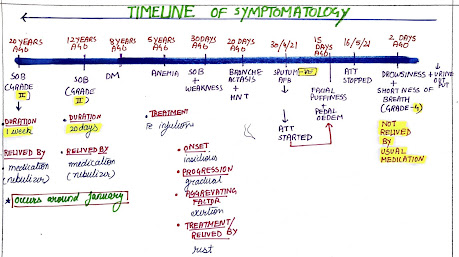
- the anatomical localization of the problem is at the bronchioles.
- etiology-its is due exposue of dust /allergens in paddy feilds
b)PHARMACOLOGICAL INTERVENTION
MECHANISM:In an intervention study involving early mobilization of intubated abdominal surgery patients, it was observed that high thoracic positions, such as sitting upright for 20 minutes, led to an improvement in transthoracic pressure, with consequent improvement in the Cst, rs. This gain enabled a reduction in the driving pressure required for the generation of a similar lung volume. MECHANISM: During systole, CPAP induced increase in intrathoracic pressure reduces the venous return, decreasing the right and left ventricular preload, thereby improving mechanics in an overloaded ventricle, whereas in diastole, CPAP increases pericardial pressure, reduces transmural pressure, and thus decreases afterload. - Agumentin(amoxicillin+calvulanic acid)
MECHANISM: Amoxicillin binds to penicillin-binding proteins within the bacterial cell wall and inhibits bacterial cell wall synthesis. Clavulanic acid is a β-lactam, structurally related to penicillin, that may inactivate certain β-lactamase enzymes MECHANISM: Azithromycin binds to the 23S rRNA of the bacterial 50S ribosomal subunit. It stops bacterial protein synthesis by inhibiting the transpeptidation/translocation step of protein synthesis and by inhibiting the assembly of the 50S ribosomal subunit MECHANISM: Furosemide, like other loop diuretics, acts by inhibiting the luminal Na-K-Cl cotransporter in the thick ascending limb of the loop of Henle, by binding to the chloride transport channel, thus causing sodium, chloride, and potassium loss in urine. MECHANISM: The mechanism of action of pantoprazole is to inhibit the final step in gastric acid production. In the gastric parietal cell of the stomach, pantoprazole covalently binds to the H+/K+ ATP pump to inhibit gastric acid and basal acid secretion. The covalent binding prevents acid secretion for up to 24 hours and longer. MECHANISM:Hydrocortisone binds to the glucocorticoid receptor leading to downstream effects such as inhibition of phospholipase A2, NF-kappa B, other inflammatory transcription factors, and the promotion of anti-inflammatory genes. Hydrocortisone has a wide therapeutic index and a moderate duration of action. - Neb. with ipravent ,budecortisone
MECHANISM: *Ipravent belongs to a group of medicines known as anticholinergic bronchodilators. Anticholinergic bronchodilators work by relaxing the bronchial tubes (air passages) that carry air in and out of your lungs. This makes breathing less difficult.
*Budesonide is a potent topical anti-inflammatory agent. [19] It binds and activates glucocorticoid receptors (GR) in the effector cell (e.g., bronchial) cytoplasm that allows the translocation of this budesonide-GR complex in the bronchi nucleus, which binds to both HDCA2 and CBP
MECHANISM: Pulmoclear Tablet is a combination of two mucolytic medicines: Acebrophylline and Acetylcysteine. It thins and loosens mucus (phlegm) making it easier to cough out. MECHANISM:The aims of ACTs in patients with COPD are to assist sputum clearance in an attempt to reduce symptoms and paroxysmal coughing, slow the decline in lung function, reduce exacerbation frequency and hasten the recovery from exacerbations. MECHANISM:thiamine may augment aerobic metabolism in the critically ill, even in the absence of absolute deficiency. We hypothesized that the administration of intravenous thiamine to critically ill patients would cause an increase in oxygen extraction and V.o2.
MECHANISM: All 3 vital signs acquired from a pulse oximeter (pulse rate, oxygen saturation, and respiratory rate) are predictive of COPD exacerbation events, with oxygen saturation being the most predictive, followed by respiratory rate and pulse rate. MECHANISM: Fluid overload or pulmonary/vascular congestion is a common clinical feature in patients with heart failure and is associated with adverse outcomes. Maintaining records of patients' fluid intake and output (I&O) has long been considered an important aspect of nursing care to assess hydration status.
c)
The cause of acute Exaberation in this patient is probably due to generalised weakness due to the drugs or due to upper respiratory tract infection.
d)
ATT could have effected the patient’s condition by causing generalised weakness.
e)
*Hyponatraemia in COPD develops due to many reasons such as worsening of hypoxia, hypercapnia ,respiratory acidosis and right-sided heart failure with development of lower limb oedema ,it could also be due to renal insufficiency.
*respiratory acidosis with metabolic alkalosis( owing to renal compensation) in patients with COPD with hypercapnia is the usual cause of hypochloremia.
NEUROLOGY
CASE 1
1) A 40 year old male with complains of irrelevant talking.
- anatomical location and pathophysiology
* Ethanol is a central nervous system depressant that produces euphoria and behavioral excitation at low blood concentrations due to increased glutamate binding to N-methyl-D-aspartate (NMDA) receptors; at higher concentrations, it leads to acute intoxication by potentiation of the gamma-aminobutyric acid (GABA) effects, particularly in receptors with delta subunits. The local distribution of these subunits explains why the cerebellum, cortical areas, thalamic relay circuitry, and brainstem are the main networks that mediate the intoxicating effects of alcohol.
*Prolonged alcohol use leads to the development of tolerance and physical dependence, which may result from compensatory functional changes by downregulation of GABA receptors and increased expression of NMDA receptors with production of more glutamate to maintain central nervous system (CNS) transmitter homeostasis*Abrupt cessation of chronic alcohol consumption unmasks these changes with a glutamate-mediated CNS excitation resulting in autonomic overactivity and neuropsychiatric complications such as delirium and seizures.The latter are usually of generalized tonic–clonic type and are mediated largely in the brainstem by abrogation of the tonic inhibitory effect of the GABAergic delta subunits.
b)
1. IVF NS and RL
mechanism:Administer intravenous (IV) fluids for rehydration, as necessary. Most patients with severe alcohol withdrawal are significantly dehydrated, and their fluid requirements range from 4-10 L in the first 24 hours. Because hypoglycemia is common in these patients due to depleted glycogen stores, a 5% dextrose solution (in 0.90% or 0.45% saline) should be used to prevent hypoglycemia.
2. Inj. THIAMINE
mechanism:
*
- It is well known that chronic alcoholics are at high risk for being deficient in vitamin B1 (thiamine), which is known to put the patient at an increased risk for Wernicke-Korsakoff Syndrome, cerebellar degeneration, and cardiovascular dysfunction.
- What does thiamine contribute that allows the cells in the brain to respond to this metabolic demand?
Upon absorption into the body, thiamine is used to form thiamine pyrophosphate, which is an essential co-factor used by several cellular enzymes.
3. Inj. Lorazepam
mechanism:Lorazepam binds to benzodiazepine receptors on the postsynaptic GABA-A ligand-gated chloride channel neuron at several sites within the central nervous system (CNS). It enhances the inhibitory effects of GABA, which increases the conductance of chloride ions into the cell.
4. T. Pregabalin
mechanism: Pregabalin is structurally related to the antiepileptic drug gabapentin and the site of action of both drugs is similar, the alpha2-delta (alpha2-delta) protein, an auxiliary subunit of voltage-gated calcium channels. Pregabalin subtly reduces the synaptic release of several neurotransmitters, apparently by binding to alpha2-delta subunits, and possibly accounting for its actions in vivo to reduce neuronal excitability and seizures.
5. Inj. HAI S.C.- premeal
mechanism:Regulates glucose metabolism
Insulin and its analogues lower blood glucose by stimulating peripheral glucose uptake, especially by skeletal muscle and fat, and by inhibiting hepatic glucose production; insulin inhibits lipolysis and proteolysis and enhances protein synthesis; targets include skeletal muscle, liver, and adipose tissue
6. GRBS
mechanism:Regular blood glucose monitoring is an essential tool to help you take control of your diabetes. By identifying and recording changes in your blood sugar levels, you'll have more information about how food, exercise, stress, and other factors affect your diabetes.
7. glucose monitoring
mechansm:Regular blood glucose monitoring is an essential tool to help you take control of your diabetes. By identifying and recording changes in your blood sugar levels, you'll have more information about how food, exercise, stress, and other factors affect your diabetes.
8. Inj ampoule KCl
mechanism:Potassium ions participate in a number of essential physiological processes, including the maintenance of intracellular tonicity; the transmission of nerve impulses; the contraction of cardiac, skeletal, and smooth muscle; and the maintenance of normal renal function.
9. Syp Potchlor
mechanism:It helps to maintain potassium balance in the body by restoring normal potassium levels in patients with a low level of potassium
c)
Long-term abuse can damage the nervous system liver and other organs this damage maybe is reversible drinking too much alcohol can also alter the level of certain nutrients in the body including
* thiamine
* folate
* vitamin B6 and B 12
vitamins are needed for proper no function and can also cause alcohol related neurological diseases.
d)
thiamine is used to form thiamine pyrophosphate, which is an essential co-factor used by several cellular enzymes.3 The pyrophosphate portion added to thiamine is important since this group is used to bind to magnesium and then further bind to amino acid side chains on the cellular enzyme.3 This allows the thiamin pyrophosphate to function as a co-factor to that enzyme so that it can facilitate the forward movement of its assigned biochemical reactions. One of the most important sets of biochemical reactions requiring the availability of thiamine includes the reactions involved in glycolysis and the tricarboxylic acid (TCA) cycle. There are three enzymes that facilitate several reactions involved in these processes that require the presence of thiamine pyrophosphate. These enzymes are a-ketoglutarate dehydrogenase, branched chain amino acid dehydrogenase, and pyruvate dehydrogenase. The forward movement of glycolysis and the TCA cycle are essential for the cell's ability to generate the ATP needed to maintain other cellular activity.
e)
The sudden removal of alcohol can also cause kidney failure. Alcohol has to be broken down and cleared from the body as urine. This needs water, as the products of the breakdown have to be in solution.
Alcohol also inhibits the production of an anti-diuretic hormone, so large quantities of alcohol make you urinate a lot and become dehydrated. Electrolytes in the body, such as sodium, magnesium, calcium and potassium, are usually in solution (water) and excessive amounts of alcohol can cause an imbalance in these electrolytes as well as an acid-base imbalance. These imbalances can eventually lead to acute kidney failure.
f)
the affected kidney leads to
1) a moderately reduced red cell life span,
2) blood loss, and
3) an inadequate increase in erythropoiesis relative to the fall in hemoglobin (Hb).
g) excessive alcohol can cause nutritional deficiency and alcohol toxicity these in turn can cause poor nutrition leading to poor wound healing and problems with nerves (neuropathy) when sensory nerves in the foot stops working the foot can get injured and this leads to foot ulcers .
CASE 2
2)A 52 year old male with Cerebellar Ataxia
a)
*the antomical location o the disease is CEREBREAL BLOOD VESSELS.
*the primary etiology is
DENO HYPERTENTION in the patient.
b)PHARMACOLOGICAL INNTERVENTIONS
1)Tab Veratin
MECHANISM:
Betahistine is one of the few drugs known which is said to improve the microcirculation of the inner ear. It works as a histamine analogue through 2 modes of action
(1) agonist of H1 receptors and
(2) antagonist of H3 receptors.
It has a weak effect on H1 receptors but strong effect on H3 receptors.
2)Inj Zofer
MECHANISM:
Zofer Tablet works by inhibiting the action of a chemical substance named serotonin, which is responsible for inducing nausea and vomiting. Ondansetron binds to a receptor known as 5-HT₃, thus inhibits the binding of serotonin to it and prevents vomiting and nausea.
3)Tab Ecosprin
MECHANISM:
Ecosprin is an antiplatelet medicine. It works by inhibiting the action of an enzyme, which makes platelets aggregate together to form a blood clot.
4)Tab Atorvostatin
MECHANISM:
Atorvastatin is in a class of medications called HMG-CoA reductase inhibitors (statins). It works by slowing the production of cholesterol in the body to decrease the amount of cholesterol that may build up on the walls of the arteries and block blood flow to the heart, brain, and other parts of the body.
5)Tab Clopidogrel
MECHANISM:
The active metabolite of clopidogrel selectively inhibits the binding of adenosine diphosphate (ADP) to its platelet P2Y12 receptor and the subsequent ADP- mediated activation of the glycoprotein GPIIb/IIIa complex, thereby inhibiting platelet aggregation. This action is irreversible.
6)Inj Thiamine
MECHANISM:
Thiamine combines with adenosine triphosphate (ATP) in the liver, kidneys, and leukocytes to produce thiamine diphosphate. Thiamine diphosphate acts as a coenzyme in carbohydrate metabolism, in transketolation reactions, and in the utilization of hexose in the hexose-monophosphate shunt.
c)
Hypertension predisposes individuals to stroke by
(1) aggravating atherosclerosis in the aortic arch and cervicocerebral arteries; (2) causing arteriosclerosis and lipohyalinosis in the small-diameter penetrating cerebral end arteries; and
(3) promoting heart disease that may be complicated by stroke.
d)
*Liver damage due to too much alcohol can stop the liver from making substances that help your blood to clot. This can increase your risk of having a stroke caused by bleeding in your brain.
*alcohol consumption is associated with increased high density lipoprotein cholesterol levels, decrease platelet aggregation, increase fibrinolysis, and decrease plasma fibrinogen levels and this might help explain the lower risk of ischemic stroke
3)
A 45 YEARS OLD FEMALE PATIENT WITH PALPITATIONS, PEDAL EDEMA, CHEST PAIN,CHEST HEAVINESS,RADIATING PAIN ALONG LEFT UPPER LIMB
a)
Evolution of symptoms
:patient was normal 8 months back then developed b/l pedal edema which gradually progressed.
Aggerevated in sitting and standing position, relived on taking medication
*Palpitations :since 5days, sudden in onset which is more during night
Aggerevated by lifting heavy weights, speaking continuously
*Dyspnoea during palpitations (NYHA-3) since 5 days
*pain:since 6days, radiating along left upper limb, more during palpitations and relived on medication.
Chest pain associated with chest heaviness since 5 days
Anatomical localisation :
Palpitations
Dyspnoea(NYHA-3)
Pedal edema
Chest pain
Radiating pain along her left upper limb
Etiological agent :
*By localization, electrolyte imbalance (hypokalemia) causing the her manifestations like palpitations, chest heaviness, generalised body weak ness
*radiating pain along her left upper limb due to cervical spondylosis
2Q)
What are the reasons for recurrence of hypokalemia in her? Important risk factors for her hypokalemia?
A) Reason: recurrent hypokalemic periodic paralysis
Current risk factor:due to use of diuretics
Other risk factors
A) Abnormal loses:
Medications-diuretics, laxatives, enema, corticosteriods
Real causes- osmotic diuresis, mineralo corticoid excess, renal tubular acidosis, hypomagnesenemia
B) trance cellular shift : alkalosis, thyrotoxicosis, delirium tremans, head injury, Myocardial, ischemia, recurrent hypokalemic periodic paralysis
C) Inadequate intake: anorexia, dementia, stareation, total parental nutrition
D) psuedohypokalemia:delayed sample analysis, significant leukocytosis
c)
Early changes of hyperkalemia include
- tall,peaked T waves with a narrow base, best seen in precordial leads ;
- shortened QT interval;
- ST-segment depression. These changes are typically seen at a serum potassium level of 5.5-6.5 mEq/L
CASE 4
4)
55years old patient with seizures.
a).
A stroke causes your brain to become injured. The injury to your brain results in the formation of scar tissue, which affects the electrical activity in your brain. Disrupting the electrical activity can cause you to have a seizure.
b)
In the previous episodes of seizures, patient didn't loose his consciousness but in the recent episode he lost his consciousness Because due to progression of stroke there is will be scar formation s there will be worsening of symptoms leading to unconsciousness.
Abnormal increased activity in fronto-parietal association cortex and related subcortical structures is associated with loss of consciousness in generalized seizures. Abnormal decreased activity in these same networks may cause loss of consciousness in complex partial seizures.
CASE 5
5)A 48 year old male with seizures and altered sensorium
a)
the reason for patient to develop ataxia in past one year is ALCOHOL
The toxic effects of alcohol are diverse. Alcohol-related cerebellar degeneration is one of the commonest causes of acquired cerebellar ataxia(ALCOHOL INDUCED TOXIC ATAXIA).
The pathophysiology remains unclear but proposed mechanisms include excitotoxicity, dietary factors, oxidative stress, compromised energy production and cell death
b)
the reason for IC bleed is
CHRONIC ALCOHOL CONSUMPTION
↓
ALCOHOL INDUCED TOXIC ATAXIA
↓
REPEATED FALLS
↓
IC BLEEDING
* The impaired platelet function, together with the reduced platelet count, may contribute to the bleeding diathesis associated with chronic alcoholism and to the increased incidence and recurrence of gastrointestinal haemorrhage associated with excessive alcohol intake.
CASE 6
A 30 YR OLD MALE PATIENT WITH WEAKNESS OF RIGHT UPPER LIMB AND LOWERLIMB
a)
three main causes of a stroke following a car accident.:
- The most common injury that car accident victims face is whiplash. This is caused by a collision with another car that severely and suddenly jerks your head and neck forward, resulting in the shredding of smooth muscle tissues. When the lining of arteries in your neck tears, it creates a large pressure of pooling blood that eventually gets trapped and forms a clot.
- Hemorrhagic strokes, These types of strokes happen when blood from arteries seeps into the brain, usually a consequence of weakened blood vessels that rupture.
- disruption of blood supply could trigger a stroke. If a car accident prevents a victim from being able to receive ample oxygen to the brain,
b)
WARNING SIGNS
Additional symptoms of stroke may include:
c)
PHARMACOLOGICAL INNERVENTIONS
1.Injection Mannitol
mechanism: Because of its osmotic effect, mannitol is assumed to decrease cerebral edema. Mannitol might improve cerebral perfusion by decreasing viscosity, and as a free-radical scavenger, it might act as a neuroprotectant.
2.TAB Ecospirin
mechanism:Ecosprin provides the antiplatelet action by irreversibly inhibiting the formation of thromboxane A2, via acetylation of platelet cyclooxygenase. Thromboxane plays a role in the aggregation of platelets.
3.TAB ATORVAS
mechanism:In patients with recent stroke or TIA and without known coronary heart diseaseatorvastatin per day reduced the overall incidence of strokes and of cardiovascular events
Atorvastatin competitively inhibits 3-hydroxy-3-methylglutaryl-coenzyme A (HMG-CoA) reductase. By preventing the conversion of HMG-CoA to mevalonate, statin medications decrease cholesterol production in the liver.
d)
in this case alcohol does not play a major role in cva as he drinks alcohol ocassionally.
e)
HDL (high-density lipoprotein), or “good” cholesterol, absorbs cholesterol and carries it back to the liver. The liver then flushes it from the body. High levels of HDL cholesterol can lower your risk for heart disease and stroke.
CASE 7
A 50 YEAR OLD PATIENT WITH CERVICAL MYELOPATHY
a)
There is loss of power of adduction and extension of the ulnar two or three fingers and an inability to grip and release rapidly with these fingers. These changes have been termed "myelopathy hand" and appear to be due to pyramidal tract involvement.
b)
Wartenberg's sign is a neurological sign consisting of involuntary abduction of the fifth (little) finger, caused by unopposed action of the extensor digiti minimi. . This finding of weak finger adduction in cervical myelopathy is also called the "finger escape sign".
c)
Hoffman's sign or reflex is a test used to examine the reflexes of the upper extremities. This test is a quick, equipment-free way to test for the possible existence of spinal cord compression from a lesion on the spinal cord or another underlying nerve condition.
CASE 8
A 17 year old female with seizures
a)
the cause of her condiion could be IRON DEFICENCY ANEMIA.
b)
Risk factors for children and infants include:
- Problems with the way their blood forms clots
- Sickle cell anemia
- Chronic hemolytic anemia
- Beta-thalassemia major
- Heart disease — either congenital (you're born with it) or acquired (you develop it)
- Iron deficiency
- Certain infections
- Dehydration
- Head injury
- For newborns, a mother who had certain infections or a history of infertility
Risk factors for adults include:
- Pregnancy and the first few weeks after delivery
- Problems with blood clotting; for example, antiphospholipid syndrome, protein C and S deficiency, antithrombin III deficiency, lupus anticoagulant, or factor V Leiden mutation
- Cancer
- Collagen vascular diseases like lupus, Wegener’s granulomatosis, and Behcet syndrome
- Obesity
- Low blood pressure in the brain (intracranial hypotension)
- Inflammatory bowel disease like Crohn’s disease or ulcerative colitis
c)
there was a sezuire free period due to administration of antiepileptic drugs as the effect of drugs weans off the sezures appear again followed by administration of phenobarbitone leading to spontaneous resolution of the sezuires.
d)
heparin as CLEXANE was given to relive clot in suspission of CVST
CARDIOLOGY
CASE 1
1)A 78YEAR OLD MALE WITH SHORTNESS OF BREATH, CHEST PAIN, B/L PEDAL EDEMA AND FACIAL PUFFINESS
a)
Preserved ejection fraction (HFpEF) – also referred to as diastolic heart failure. The heart muscle contracts normally but the ventricles do not relax as they should during ventricular filling (or when the ventricles relax).
Reduced ejection fraction (HFrEF) – also referred to as systolic heart failure
HFpEF is preceded by chronic comorbidities, such as hypertension, type 2 diabetes mellitus (T2DM), obesity, and renal insufficiency, whereas HFrEF is often preceded by the acute or chronic loss of cardiomyocytes due to ischemia, a genetic mutation, myocarditis, or valvular disease
b)
Pericardiocentesis is not done here Because the effusion was self healing ,It reduced from 2.4cm to 1.9 cm.
c)
risk factors for development of heart faliure in this patent
- Alcohol abuse increases the risk of atrial fibrillation, heart attack and congestive heart failure
- high blood pressure
- Smoking
- Diabetes
- AV block can be associated with severe bradycardia and hemodynamic instability. It has a greater risk of progressing to third-degree (complete) heart block or asystole.
- wosening of pericardial effusion leaing to cardiac tamponade.
d)
visceral pericardium may have thickened which is restricting the heart to expand causing hypotension
(May be secondary to TB)
*Diabetes often leads to kidney damage, and failing kidneys can cause anemia. Healthy kidneys know when your body needs new red blood cells. They release a hormone called erythropoietin (EPO), which signals your bone marrow to make more. Damaged kidneys don't send out enough EPO to keep up with your needs.
*Alcohol can impact red blood cell production as it decreases the number of precursor cells in the bone marrow resulting in fewer mature red blood cells to be made in addition to this alcohol can impact red blood cell maturation causing abnormality in shape or dysfunction of the cell
c)
~Circulation of blood at the wound site is critical for wound healing. As a result of narrowed blood vessels, diabetic wound healing is impaired because less oxygen can reach the wound and the tissues do not heal as quickly.
~The exact cause of diabetic blisters is unclear, but several factors might play a role in their development;
The blisters may result from:
- shoes that do not fit correctly
- reduced circulation
- Candida albicans, a fungal infection
- other injury or irritation in the feet or hand
d)STAGE 1: insulin resistance
STAGE 2: prediabetes
STAGE 3:diabetes type 2
STAGE4: microvascular complications
CASE3
A-Fib and Biatrial Thrombus in a 52yr old Male
a)
*the anatomical site is BLOOD VESSELS;
* ETIOLOGY:
The physical stress of hypertension on the arterial wall also results in the aggravation and acceleration of atherosclerosis, particularly of the coronary and cerebral vessels. Moreover, hypertension appears to increase the susceptibility of the small and large arteries to atherosclerosis.
The most likely cause of arterial thrombosis is artery damage due to atherosclerosis. Atherosclerosis occurs when a person has a buildup of plaque on the walls of their arteries. The arteries then begin to narrow and harden, which increases a person's risk of developing arterial thrombosis.
b)PHARMACOLOGICAL INTERVENTIONS
1. TAB. Dytor
mechanism: Through its action in antagonizing the effect of aldosterone, spironolactone inhibits the exchange of sodium for potassium in the distal renal tubule and helps to prevent potassium loss.
2. TAB. Acitrom
mechanism: Acenocoumarol inhibits the action of an enzyme Vitamin K-epoxide reductase which is required for regeneration and maintaining levels of vitamin K required for blood clotting
3. TAB. Cardivas
mechanism:Carvedilol works by blocking the action of certain natural substances in your body, such as epinephrine, on the heart and blood vessels. This effect lowers your heart rate, blood pressure, and strain on your heart. Carvedilol belongs to a class of drugs known as alpha and beta-blockers.
4. INJ. HAI S/C
MECHANISM:Regulates glucose metabolism
Insulin and its analogues lower blood glucose by stimulating peripheral glucose uptake, especially by skeletal muscle and fat, and by inhibiting hepatic glucose production; insulin inhibits lipolysis and proteolysis and enhances protein synthesis; targets include skeletal muscle, liver, and adipose tissue
5.TAB. Digoxin
mechanism:
Digoxin has two principal mechanisms of action which are selectively employed depending on the indication:
Positive Ionotropic: It increases the force of contraction of the heart by reversibly inhibiting the activity of the myocardial Na-K ATPase pump,
an enzyme that controls the movement of ions into the heart.
6. Hypoglycemia symptoms explained
7. Watch for any bleeding manifestations like Petechiae, Bleeding gums.
8. APTT and INR are ordered on a regular basis when a person is taking the drug warfarin to make sure that the drug is producing the desired effect.
c)
*cardiorenal syndrome type 4 is seen in this patient.
d)
effect of hypertention
They can also impair blood vessels' ability to relax and may stimulate the growth of smooth muscle cells inside arteries. All these changes can contribute to the artery-clogging process known as atherosclerosis.
e)
APTT and INR are ordered on a regular basis when a person is taking the drug warfarin to make sure that the drug is producing the desired effect.
Here, an INR of 3-4.5 is recommended. Warfarin should be started in conjunction with heparin or low molecular weight heparin when the diagnosis of venous thromboembolism is confirmed, although local protocols may vary in their starting doses and titration schedule.
CASE 4
67 year old patient with acute coronary syndrome
a)
*the anatomical site of etiology is BLOOD VESSLES*Coronary artery disease is caused by plaque buildup in the wall of the arteries that supply blood to the heart (called coronary arteries). Plaque is made up of cholesterol deposits. Plaque buildup causes the inside of the arteries to narrow over time. This process is called atherosclerosis
PHARMACOLOGICAL INTERVENTIONS
MECHANISM:Tablet belongs to a group of medicines called
long-acting beta-blocker.
Met XL Tablet works by blocking the effects of some chemicals on your heart and blood vessels. It slows down your heart rate and helps it to beat with less force - Percutaneous Coronary Intervention (PCI, formerly known as angioplasty with stent) is a non-surgical procedure that uses a catheter (a thin flexible tube) to place a small structure called a stent to open up blood vessels in the heart that have been narrowed by plaque buildup, a condition known as atherosclerosis.
c)
PCI performed from 3 to 28 days after MI does not decrease the incidence of death, reinfarction or New York Heart Association (NYHA) class IV heart failure but it is associated with higher rates of both procedure-related and true ST elevation reinfarction.3 A retrospective analysis of the clinical data revealed The Thrombolysis in Myocardial Infarction (TIMI) Risk Score of 4 predicting a 30-day mortality of 7.3% in this patient. Late PCI leads to the increased risks of periprocedural complications, long-term bleeding, and stent thrombosis.
The high incidence of CAD and the increasing need for PCI provides an opportunity to evaluate its appropriate use and highlight potential overuse. PCI is frequently reported to be overused and inappropriately recommended. Behnke et al defined overuse as ‘use of unnecessary care when alternatives may produce similar outcomes, resulting in a higher cost without increased value’.8Overuse causes a heavy financial burden on people living in countries, where fee-for-service and ill-regulated private healthcare provides much of the patient care. As a result, cost of healthcare increases and causes potential harm to the patients.
Factors responsible for percutaneous coronary intervention (PCI) overuse
Provider-related factors
Inappropriate PCI recommendation without coronary artery bypass grafting (CABG) facility availability.
PCI and diagnostic catheterisation performed during the same session (ad hoc PCI).
Lack of shared decision making.
Medico-legal concerns related to risks from failed medical intervention.
Poorly regulated, privatisation and fee-for-service in healthcare.
Fear of missing the ‘widow-maker’.
Patient related factors
Patient preference for minimally invasive PCI over CABG.
Lack of health literacy among patients.
Fear, anxiety, misperceptions and misbeliefs among patients about PCI benefits over optimal medical therapy and lifestyle modification.
CASE 5
CASE DISCUSSION ON ACUTE MYOCARDIAL INFARCTION
a)
*the anatomical location ofetiology is BLOOD VESSELS.
*myocardial infarction is usually due to thrombotic occlusion of a coronary vessel caused by rupture of a vulnerable plaque. Ischemia induces profound metabolic and ionic perturbations in the affected myocardium and causes rapid depression of systolic function

b)
PHARMACOLOGICAL INNTERVENTION
1.TAB. ASPIRIN
mechanism:Aspirin inhibits platelet function through irreversible inhibition of cyclooxygenase (COX) activity. Until recently, aspirin has been mainly used for primary and secondary prevention of arterial antithrombotic events.
2.TAB ATORVAS
mechanism:Atorvastatin competitively inhibits 3-hydroxy-3-methylglutaryl-coenzyme A (HMG-CoA) reductase. By preventing the conversion of HMG-CoA to mevalonate, statin medications decrease cholesterol production in the liver.
3.TAB CLOPIBB
mechanism:The active metabolite of clopidogrel selectively inhibits the binding of adenosine diphosphate (ADP) to its platelet P2Y12 receptor and the subsequent ADP- mediated activation of the glycoprotein GPIIb/IIIa complex, thereby inhibiting platelet aggregation. This action is irreversible.
4.INJ HAI
mechanism:Regulates glucose metabolism
Insulin and its analogues lower blood glucose by stimulating peripheral glucose uptake, especially by skeletal muscle and fat, and by inhibiting hepatic glucose production; insulin inhibits lipolysis and proteolysis and enhances protein synthesis; targets include skeletal muscle, liver, and adipose tissue
5.ANGIOPLASTY
mechanism:Angioplasty, also known as balloon angioplasty and percutaneous transluminal angioplasty (PTA), is a minimally invasive endovascular procedure used to widen narrowed or obstructed arteries or veins, typically to treat arterial atherosclerosis.
c)
the second PCI was NOT necessary in this patient.
PCI performed from 3 to 28 days after MI does not decrease the incidence of death, reinfarction or New York Heart Association (NYHA) class IV heart failure but it is associated with higher rates of both procedure-related and true ST elevation reinfarction.3 A retrospective analysis of the clinical data revealed The Thrombolysis in Myocardial Infarction (TIMI) Risk Score of 4 predicting a 30-day mortality of 7.3% in this patient. Late PCI leads to the increased risks of periprocedural complications, long-term bleeding, and stent thrombosis.
The high incidence of CAD and the increasing need for PCI provides an opportunity to evaluate its appropriate use and highlight potential overuse. PCI is frequently reported to be overused and inappropriately recommended. Behnke et al defined overuse as ‘use of unnecessary care when alternatives may produce similar outcomes, resulting in a higher cost without increased value’.8Overuse causes a heavy financial burden on people living in countries, where fee-for-service and ill-regulated private healthcare provides much of the patient care. As a result, cost of healthcare increases and causes potential harm to the patients.
GASTROLOGY
CASE 1
A 33 YEAR OLD MAN WITH PANCREATITIS, PSEUDOCYST AND LEFT BRONCHO-PLEURAL FISTULA
a)
*antomical location of etiology is pancreas(ductal obstruction,acinar cell injury,defective intracellular transport)
*The pathophysiology of acute pancreatitis is characterized by a loss of intracellular and extracellular compartmentation, by an obstruction of pancreatic secretory transport and by an activation of pancreatic enzymes Attributed to alcohol
b)PHARMACOLOGICAL INTERVENTIONS
1) ING. MEROPENAM
mechanism:Meropenem is bactericidal except against Listeria monocytogenes, where it is bacteriostatic. It inhibits bacterial cell wall synthesis like other β-lactam antibiotics. In contrast to other beta-lactams, it is highly resistant to degradation by β-lactamases or cephalosporinases.
2) ING. METROGYL
mechanism:Metronidazole diffuses into the organism, inhibits protein synthesis by interacting with DNA and causing a loss of helical DNA structure and strand breakage. Therefore, it causes cell death in susceptible organisms.
3) ING. AMIKACIN
mechanism:he primary mechanism of action of amikacin is the same as that for all aminoglycosides. It binds to bacterial 30S ribosomal subunits and interferes with mRNA binding and tRNA acceptor sites, interfering with bacterial growth.
4) TPN ( Total Parenteral Nutrition )
mechanism: the early administration of enteral nutrition must be the standard therapeutic approach in patients with severe acute pancreatitis it decreases the risk of infection; TPN is only required in a few patients.
5) IV NS / RL
mechanism:Patients with acute pancreatitis lose a large amount of fluids to third spacing into the retroperitoneum and intra-abdominal areas. Accordingly, they require prompt intravenous (IV) hydration within the first 24 hours. Especially in the early phase of the illness, aggressive fluid resuscitation is critically important.
6) ING. OCTREOTIDE
mechanism:
Like somatostatin, octreotide also decreases the release of growth stimulating hormones, decreases blood flow to the digestive organs, and inhibits the release of digestive hormones such as serotonin, gastrin, vasoactive intestinal peptide, secretin, motilin, and pancreatic polypeptide.
Octreotide is useful in overdose management of sulfonylurea type hypoglycemic medications, when recurrent or refractory to parenteral dextrose. Mechanism of action is the suppression of insulin secretion.
7) ING. PANTOP
mechanism:The mechanism of action of pantoprazole is to inhibit the final step in gastric acid production. In the gastric parietal cell of the stomach, pantoprazole covalently binds to the H+/K+ ATP pump to inhibit gastric acid and basal acid secretion. The covalent binding prevents acid secretion for up to 24 hours and longer.
8) ING. THIAMINE
mechanism:Vitamin B1 (thiamin) is indispensable for normal function/health of pancreatic cells due to its critical role in oxidative energy metabolism, ATP production, and in maintaining normal cellular redox state.
9) ING. TRAMADOL
mechanism:Tramadol is a centrally acting analgesic with a multimode of action. It acts on serotonergic and noradrenergic nociception, while its metabolite O-desmethyltramadol acts on the µ-opioid receptor. Its analgesic potency is claimed to be about one tenth that of morphine.
CASE 2
CASE DISCUSSION ON 25 YEAR OLD MALE WITH EPIGASTRIC PAIN
a)
the cause of dyspnea might be PLEURAL EFFUSION
b)
*This hyperglycemia could thus be the result of a hyperglucagonemia secondary to stress
* the result of decreased synthesis and release of insulin secondary to the damage of pancreatic β-cells
* elevated levels of catecholamines and cortisol
c)
LFT are increased due to hepatocyte injury
*If the liver is damaged or not functioning properly, ALT can be released into the blood. This causes ALT levels to increase. A higher than normal result on this test can be a sign of liver damage.
*elevated alanine transaminase (ALT) and aspartate transaminase (AST), usually one to four times the upper limits of normal in alcoholic fatty liver.
The reasons for a classical 2:1 excess of serum AST activity compared to serum ALT activity in alcoholic hepatitis have been attributed to
(i) decreased ALT activity most likely due to B6 depletion in the livers of alcoholics
(ii) mitochondrial damage leading to increased release of mAST in serum.
d)
Plan of action and Treatment:
Investigations:
✓ 24 hour urinary protein
✓ Fasting and Post prandial Blood glucose
✓ HbA1c
✓ USG guided pleural tapping
Treatment:
• IVF: 125 mL/hr
• Inj PAN 40mg i.v OD
• Inj ZOFER 4mg i.v sos
• Inj Tramadol 1 amp in 100 mL NS, i.v sos
• Tab Dolo 650mg sos
• GRBS charting 6th hourly
• BP charting 8th hourly
CASE 3
A 45 year old Female patient with Fever, Pain abdomen, Decreased Urine output and Abdominal distension
a)
haemoperitonium might be the probable diagnosis
b)
its possible for the blood to accumulate in the cavity extremly quickly.this could have caused her to go in shock from blood loss become unresponsive and may have resulted in death
c)
NSAID abuse may have been the reason behind her hepatomegaly as they are known to
cause drug induced hepatitis which inturn leads to cirrhosis
NEPHROLOGY
CASE 1
1)POST TURP WITH NON OLIGURIC ANT DIABETIC NEPHROPATHY
A)
the reason for SOB was- metabolic acidosis .
CAUSE OF METABOLIC ACIDOSIS-
it is commonly found in patients with kidney disease(hydronephrosis) , and its causes are:
*impaired ammonia excretion
* reduced tubular bicarbonate reabsorption
* insufficient renal bicarbonate production in relation to the amount of acids synthesised by the body and ingested with food.
The respiratory center in the brainstem is stimulated, and hyperventilation develops in an effort to compensate for the acidosis.
b)
*Acidosis has also been suggested to decrease muscle performance during fatigue by inhibiting Ca2+ release from the SR. Such inhibition will decrease the degree of activation of the contractile machinery and hence lead to decreased force production.
*Another mechanism by which intracellular acidosis may induce fatigue is by inhibition of energy metabolism. Key enzymes in glycogenolysis and glycolysis are phosphorylase and phosphofructokinase, respectively.
c)
the cause of fleshy mass in urine might be due to papillary necrosis following hydronephrosis
d)
copmlication of TURP that might have caused the disease could be
URETHRAL STENOS/BLADDER NECK STENOSIS
↓
BACKFLOW OF URINE TO KIDNEY
↓
HYDRONEPHROSIS
↓
PAPILLARY NECROSIS
CASE 2
An Eight year old with Frequent Urination
a)
* The exact pathophysiology of Attention Deficit Hyperactivity Disorder (ADHD) is not clear. With this said, several mechanisms have been proposed as factors associated with the condition. These include abnormalities in the functioning of neurotransmitters, brain structure and cognitive function.* Due to the efficacy of medications such as psychostimulants and noradrenergic tricyclics in the treatment of ADHD, neurotransmitters such as dopamine and noradrenaline have been suggested as key players in the pathophysiology of ADHD.
* Depressed dopamine activity has been associated with the condition,
b)the child doesn’t have the excessive urge of urination at night time because ADHD is a physcosomatic disorder
c)TREATMENT
Infectious Disease (HI virus, Mycobacteria, Gastroenterology, Pulmonology)
CASE 1
A 40 YEAR OLD LADY WITH DYSPHAGIA, FEVER AND COUGH
a)
the clinical history and physical finding in this paient that suggest tracheoesophageal fistula is that ,Cough occurs on taking food and liquids
(which was initially non productive then associated with sputum which is white in color , moderate in quantity and non foul smelling)
b)
Immune reconstitution inflammatory syndrome (IRIS) occurs in two forms:
- "unmasking" IRIS refers to the flare-up of an underlying, previously undiagnosed infection soon after antiretroviral therapy (ART) is started;
- "paradoxical" IRIS refers to the worsening of a previously treated infection after ART is started.
*Patients with mycobacterial disease at the time of initiation of ART are at higher risk of developing IRIS with an approximate risk of 15%. Patients originating from endemic areas for tuberculosis and cryptococcal disease are at higher risk of developing IRIS.
How can immune reconstitution inflammatory syndrome be prevented?
*The most effective prevention of IRIS would involve initiation of ART before the development of advanced immunosuppression. IRIS is uncommon in individuals who initiate antiretroviral treatment with a CD4+ T-cell count greater than 100 cells/uL.
*Aggressive efforts should be made to detect asymptomatic mycobacterial or cryptococcal disease prior to the initiation of ART, especially in areas endemic for these pathogens and with CD4 T-cell counts less than 100 cells/uL.
*Two prospective randomized studies are evaluating prednisone and meloxicam for the prevention of paradoxical TB IRIS.
INFECTIOUS DISEASE ANG HEPATOLOGY
CASE 1
LIVER ABCESS
it was undoubtedly proven that alcoholism, mainly consuming locally prepared alcohol plays a major role as a predisposing factor for the formation of liver abscesses that is both amoebic as well as pyogenic liver abscess because of the adverse effects of alcohol over the Liver.
(https://www.msjonline.org/index.php/ijrms/article/view/2414)
b)
ETIOPATHOGENESIS
c)
50% of solitary liver abscesses occur in the right lobe of the liver (a more significant part with more blood supply), less commonly in the left liver lobe or caudate lobe.
the most common cause of liver abcess is pyogenic, which afftect lobe with more blood flow ie RIGHT LOBE
The right hepatic lobe receives blood from both the superior mesenteric and portal veins, whereas the left hepatic lobe receives inferior mesenteric and splenic drainage. It also contains a denser network of biliary canaliculi and, overall, accounts for more hepatic mass.
d)
INDICATIONS FOR ULTRASOUND GUIDED ASPIRATION OF LIVER ABSCESS
- Left lobe abscess not amenable to percutaneous drainage.
- Life-threatening haemorrhage with or without intraperitoneal rupture of abscess
- Amoebic abscess eroding into neighbouring structures
- Septicaemia from secondary infection
- Failure of response to conservative therapy.
CASE 2
CASE DISCUSSION ON LIVER ABCESS
a)
cause of liver abcess in this patient is ENTAMOEBA HISTOLYTICA
APPROACH IN THE PATIENT OF AMOEBIC LIVER ABCESS
c)
we treat the paient for both amoebic and pyogenic abcess so that we dont rely only on anti-amebic therapy and insure comple treatment of the cause
d)
he confirmatory test for amoebic abcess is
*Serologic testing is the most widely used method of diagnosis for amebic liver abscess. In general, the test result should be positive, even in cases when the result of the stool test is negative (only extraintestinal disease).
*The diagnosis of amebic liver abscess was based on four or more of the following criteria:
(i) a space-occupying lesion in the liver diagnosed by ultrasonography and suggestive of abscess,
(ii) clinical symptoms (fever, pain in the right hypochondrium (often referred to the epigastrium), lower chest, back, or tip of the right shoulder),
(iii) enlarged and/or tender liver, usually without jaundice,
(iv) raised right dome of the diaphragm on chest radiograph, and
(v) improvement after treatment with antiamebic drugs (e.g., metronidazole).
CASE 3
50/Male came with altered sensorium
a)
*the anatomical location of the problem is MAXILLARY SINUS
(primary disease is initiated in the upper or lower airways and is associated with the clinical development of sinusitis, rhinocerebral mucormycosis, )
*primary etiology of the patients's problem is IMMUNOSUPPRESSION CAUSED BY DIABETES MELLITUS.
b)
PHARMACOLOGICAL INTERVENION
*inj.amphotericin B
MECHANISM:
Amphotericin B binds with ergosterol, a component of fungal cell membranes, forming pores that cause rapid leakage of monovalent ions (K+, Na+, H+ and Cl−) and subsequent fungal cell death. This is amphotericin B's primary effect as an antifungal agent.
*DEOXYCHOLATE AMPHOTERICIN B
mechanism:
Amphotericin B deoxycholate belongs to the polyene class of antifungals. It is also known by the name conventional amphotericin B and has been used for the treatment of invasive fungal infections
The addition of sodium dodecyl sulfate or sodium deoxycholate surfactant to modulate the aggregation state of Amphotericin B confirms that the monomer and dimer states have different fluorescence spectra.
c)
Indiscriminate steroid usage and high blood sugar levels are potentially responsible for driving an uptick in a fungal infection among vulnerable COVID-19 patients.
Case9
10)
it was a great experience learning through these elogs.
thank you Dr.Biswas sir for providing us with this opportunity.
REFERENCE
medscape.com
www.ncbi.nlm.com
https://www.researchgate.net
https://www.sciencedirect.com/science/article/abs/pii
https://www.mayoclinic.org
https://www.healthgrades.com
https://www.heart.org
https://www.uclahealth.org/radiology



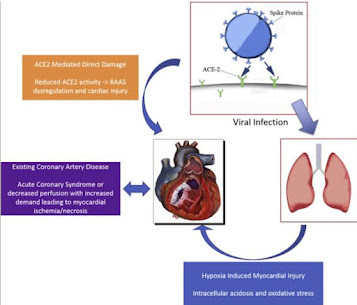

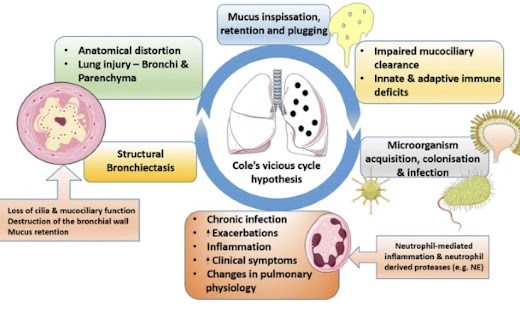



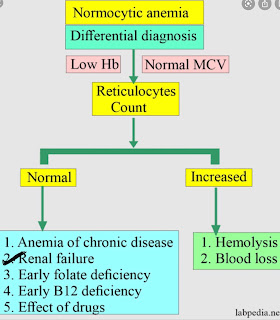
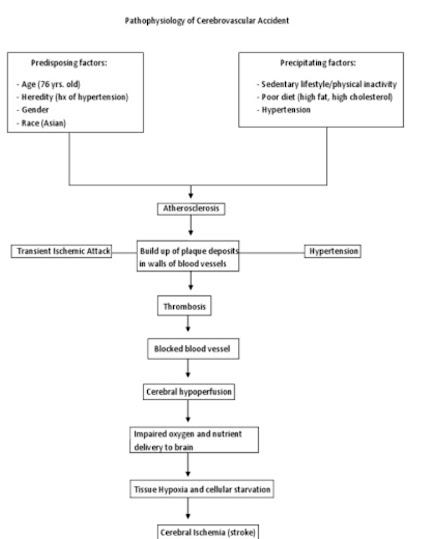











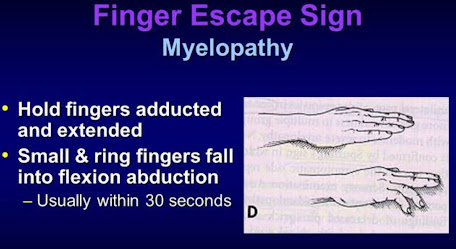










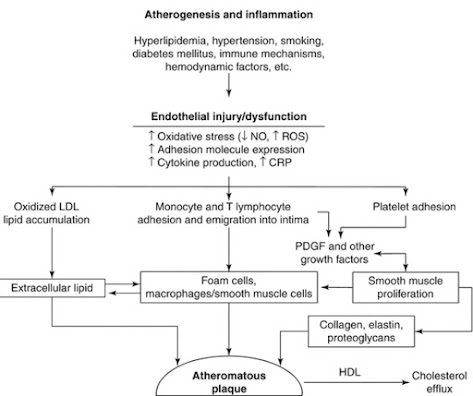







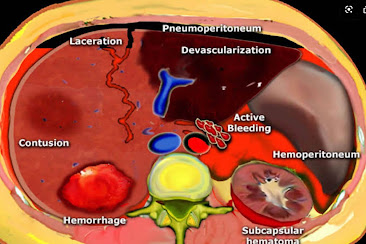










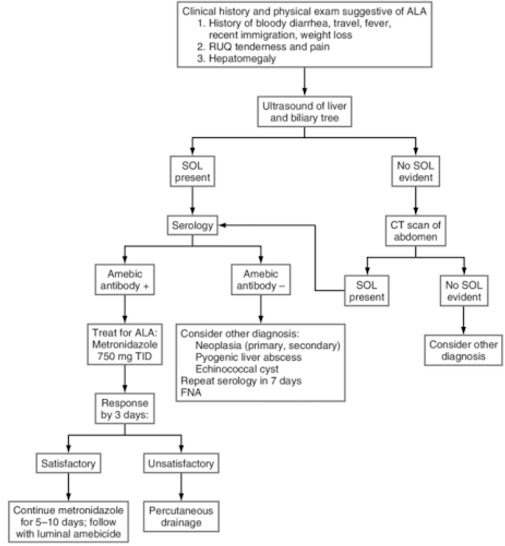



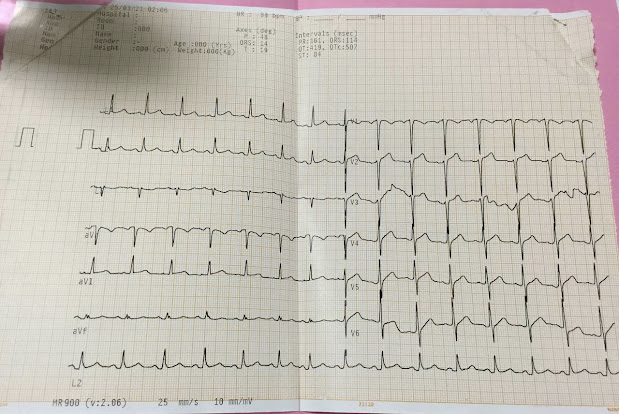
I want to share with you all on how Dr Itua saves my life with his powerful Herbal medicines, I was diagnosed of Oral/Ovarian Cancer which i suffered from for 5 years with no positive treatment until when My son came to me in the hospital when i was laying down on my dying bed waiting for god to call out my name to join him in heaven.
ReplyDeleteMy son was so excited that very day he came across Dr Itua on Blogspot, we decided to give him a try although we Americans are so scared to trust Africans but i really have no choice that time to choose life in between so we gave a try to Dr Itua Herbal medicines, god willing he was a good man with a god gift. Dr Itua sent us herbal medicine. It was three bottles. I took it for three weeks as an instructor and these herbal medicines heal me, cure my Oral/Ovarian Cancer completely. I have been living for 9 months now with a healthy life with no more symptoms.
I'm sponsoring Dr Itua in LA Advert on Cancer patent seminar which my son will be participating too and other patent Dr Itua has cured from all kind of human disease, also if you are sick from disease like,Epilepsy,Breast Cancer,Prostate Cancer,Throat cancer,Thyroid Cancer,Uterine cancer,Fibroid,Angiopathy, Ataxia,Arthritis,Brain cancer,Hiv,. Vaginal cancer,Herpes,Colon-Rectal Cancer,Chronic Disease.Amyotrophic Lateral Sclerosis,Brain Tumor,Fibromyalgia,Fluoroquinolone Toxicity,Multiple myeloma,Tach Diseases,Leukemia,Liver cancer,
Esophageal cancer,Gallbladder cancer,,Bladder cancer,Gestational trophoblastic disease,Head and neck cancer,Hodgkin lymphoma
Intestinal cancer,Kidney cancer,Hpv,Lung cancer,Adrenal cancer.Bile duct cancer,Bone cancer,Melanoma,Mesothelioma,Neuroendocrine tumors
Non-Hodgkin lymphoma,Cervical Cancer,Oral cancer,Hepatitis,Skin cancer,Soft tissue sarcoma,Spinal cancer,Pancreatic Cancer, Stomach cancer
Testicular cancer,
Syndrome Fibrodysplasia Ossificans ProgresS sclerosis,Alzheimer's disease,Chronic Diarrhea,Copd,Parkinson,Als,Adrenocortical carcinoma Infectious mononucleosis,Vulvar cancer,Ovarian cancer,,Sinus cancer, Here Is The Wonderful Healer Contact. Name_ Doctor Itua, Email Contact: drituaherbalcenter@gmail.com, Phone/WhatsApp: +2348149277967